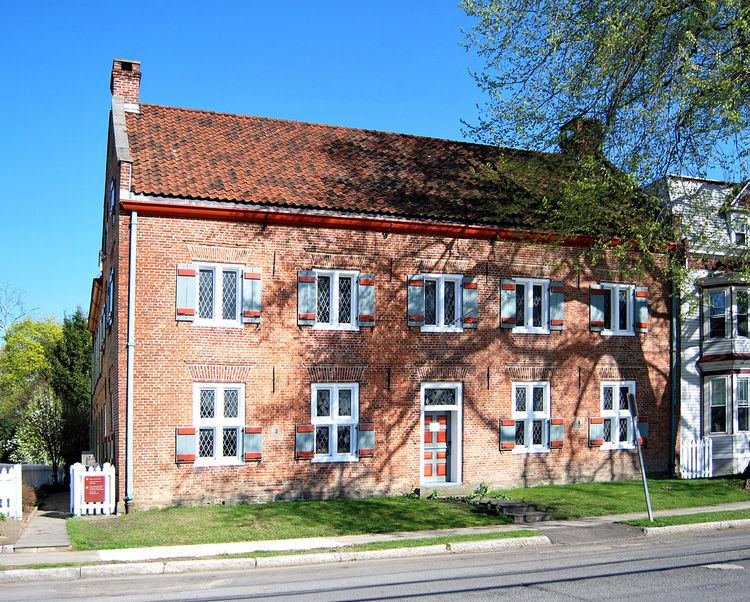Built c. 1712 Designated NHL November 11, 1961 Area 4,047 m² Architectural style American Colonial | NRHP Reference # 66000563 Opened 1707 Phone +1 518-463-8738 Added to NRHP 15 October 1966 | |
 | ||
Address 9 1/2 Riverside Ave, Rensselaer, NY 12144, USA Similar Schuyler Mansion, Knox's Headquarters State Hist, Bennington Battlefield State Hist, Clinton House, Steuben Memorial State Hist | ||
Lute player at fort crailo harvest faire
Crailo State Historic Site is a historic, fortified brick manor house in Rensselaer, New York which was originally part of a large patroonship held by Kiliaen van Rensselaer, c. 1585–1643. Crailo is a Dutch word meaning Crow's Woods (Kraaien bos), and refers to the Rensselaer's Estate in Huizen, Holland, also named "Crailo".
Contents
History
Starting as early as 1663 through the 18th century, this site had become synonymously known as Greenbush. The property consisted of flat alluvial farmlands, orchards, mills, a store, and ferry rights to Albany. As early as 1663, the estate had a small fort for the protection of the local inhabitants from Indian attacks during the Esopus Wars and in 1675 during King Philip's War the local militia captain was instructed to install a palisade around this fort. The fields and farm buildings at Crailo were used to quarter British and colonial troops as early as 1694 and at intervals during each of the French and Indian wars.
The property was inherited by Hendrick van Rensselaer, Kiliean's grandson, who built the house in 1707. His son, Johannes, was a captain in the colonial militia. Captain van Rensselaer inherited Crailo in 1740. The gunports were likely added after a raiding party of 80 French and Indians attacked Greenbush, killing up to five persons in 1746. The inhabitants of Albany witnessed this assault from across the river but troops were unable to cross in time to defend Greenbush. In 1751 and 1754 Captain van Rensselaer provided candles and firewood to the colonial garrisons at Albany and Schenectady. The house was expanded in 1762. The loopholes on the lower floor indicate the original defensive nature of the house.
It is reportedly the place where, in 1755, British Army surgeon Richard Shuckburgh, quartered in the home, wrote the ditty "Yankee Doodle" to mock the New England colonial troops who fought with the British in the French and Indian Wars.
Fort Crailo was declared a National Historic Landmark in 1961.
It is operated by the State of New York as a museum of the Colonial Dutch culture in New York State. Exhibits include clothing, furniture, household and decorative items, and archaeological artifacts from "New Netherland" historic sites in New York and New Jersey. Many artifacts from the Fort Orange archeological dig in the early 1970s are on display.
